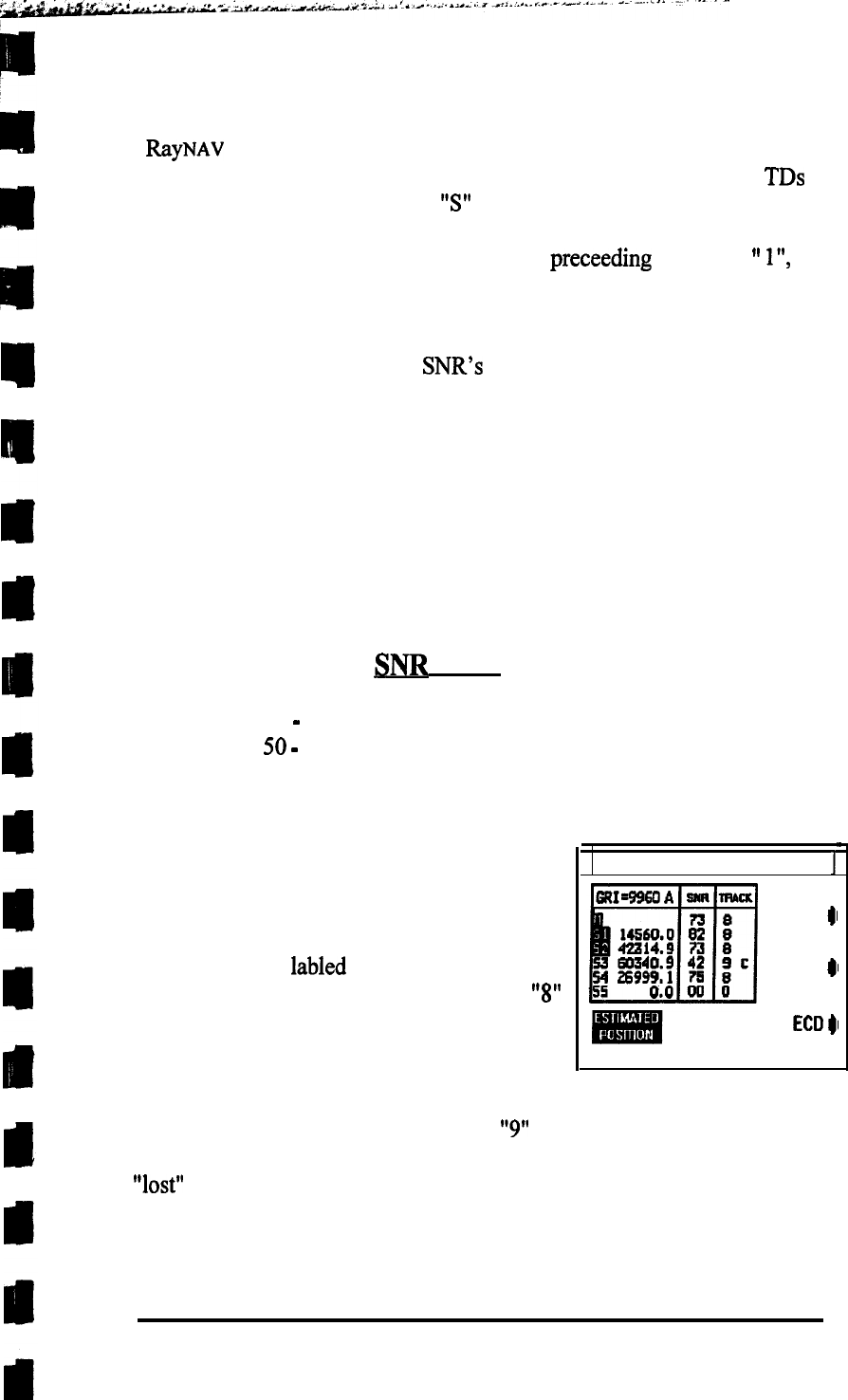
As you may remember from reading the basic loran information in the
R~~NAV
508 manual, the secondaries get their numbers by using the first
digit of their normal time delay. On this display you actually see the TDs of
all the loran signals, but the two
“S”
numbers highlighted in the reverse block
characters at the left side are the stations being used to get your Lat./Long
readout. So in the Status page example in the preceeding figure, the
”
1“)
“4”
line and the “6” lines are being received.
SNR Display
You can see a display of the
SNR’s
(signal-to -noise ratio) levels for the
Master and all received secondaries in the SNR column. The SNR level is
important because it affects the quality of the position fix and certainly
acquisition time.
The time required to select the correct cycle of the received loran signal is
directly related to the received strength of the signal (SNR). If the signals are
very weak, it usually takes much longer to “Lock-on” and track the signals
and display your position. The table below shows the general range for SNR
levels vs time of acquisition.
f3NR
Table
SNR LEVEL STATUS
TIME TO LOCK
70
-
99
Good Up to 3 minutes
50
-
69
Fair Up to 7 minutes
15-49
Poor Unpredictable
o- 14
Bad Try the GPS
Track Status
The Track Status numbers appearing in the
right hand column labled
"TRACK" vary
from 0
to 8’s during the acquisition process with an
“8”
indicating that the loran is “Locked-on” and
tracking that particular station.
.
SIGNALSTATUS LORAN ]
EST
41
STA
11
N 42 05.32’
w 071 10.14’
ECD
4,
PRESS CLEAR TO EXIT
When one of the signals disappears or becomes too weak to be tracked, the
corresponding status number may go to
“9“
until the signal is recovered. If
the signal is not recovered within 5 minutes, the signal will be considered
“1ost“
and status number reverts to 0 (re-initiating search).
OPERATION 337


















